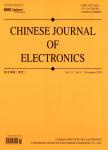Power Optimization in Cell-Free Massive MIMO with Non-ideal Hardware Transceiver
Power Optimization in Cell-Free Massive MIMO with Non-ideal Hardware Transceiver作者机构:Wireless Communications Key Laboratory of Jiangsu Province Nanjing University of Posts and Telecommunications Department of Information Technology Party School of the Communist Party of China Shandong Provincial Committee
出 版 物:《Chinese Journal of Electronics》 (电子学报(英文))
年 卷 期:2020年第29卷第1期
页 面:190-198页
核心收录:
学科分类:080904[工学-电磁场与微波技术] 0810[工学-信息与通信工程] 0809[工学-电子科学与技术(可授工学、理学学位)] 08[工学] 080402[工学-测试计量技术及仪器] 0804[工学-仪器科学与技术] 081001[工学-通信与信息系统]
基 金:supported by the National Key Research and Development Program of China(No.2018YFC1314903) the Natural Science Foundation of China(No.61861039,No.61372124,No.61427801) the Science and Technology Project Foundation of Gansu Province(No.18YF1GA060) the Postgraduate Research and Practice Innovation Program of Jiangsu Province(No.SJKY19_0740)
主 题:Cell-free massive MIMO Conjugate beamforming Non-ideal hardware transceiver Spectral efficiency QoS constraint
摘 要:A downlink cell-free massive Multipleinput multiple-output(mMIMO) system is explored. To investigate the impact of hardware distortion on downlink cell-free mMIMO, this paper recalls a well-established model of hardware impairment and derives a new closedform downlink per-user Spectral efficiency(SE) expression for distributed conjugate beamforming precoding. Based on this trackable expression, two power control algorithms,namely max-total-SE and mixed Quality-of-service(QoS)algorithms, are proposed. Numerical results indicate that the downlink per-user SE is primarily limited by the hardware quality of the receiver, especially when the user corresponds to the receiver. In addition, the proposed max-total-SE algorithm has a fast convergence rate and can significantly improve the total SE compared to the Equal power control(EPC) scheme. What’s more, our mixed QoS algorithm also performs well in many respects.



